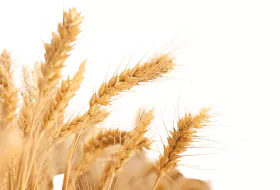Description
Forage seeds are essential for the cultivation of plants used in animal feed, especially in livestock systems. These plants include grasses, legumes, and other herbaceous species. Below are the general characteristics of forage seeds:
Shape and Size:
Forage seeds vary significantly in shape and size depending on the species.
Examples:
Elephant grass (Pennisetum purpureum): Small, oval seeds, measuring about 2 to 4 mm in length.
Ryegrass (Lolium multiflorum): Elongated and thin seeds, about 5 to 8 mm long.
White clover (Trifolium repens): Very small, spherical seeds, about 1 to 2 mm in diameter.
Alfalfa (Medicago sativa): Small, reniform seeds, about 2 to 3 mm long.
Colour:
The color of forage seeds can vary:
Tifton grass (Cynodon dactylon): Light brown to beige.
Brachiaria (Brachiaria spp.): Dark brown to black.
Red clover (Trifolium pratense): Yellow to light brown.
Cornichão (Lotus corniculatus): Light brown.
Structure:
The basic structure of forage seeds includes:
Bark (or integument): The outer layer that protects the seed.
Endosperm: The nutrient reserve that feeds the developing embryo, present in some seeds.
Embryo: The future miniature plant.
Weight:
The weight of forage seeds is quite variable. Small seeds, such as white clover, weigh only a fraction of a gram, while larger seeds, such as elephant grass, can weigh several milligrams.
Viability:
The viability of seeds depends on factors such as storage, humidity, and temperature. Well-stored seeds in proper conditions (cool, dry, and dark) can maintain their viability for several years, although most have a shelf life of 1 to 5 years.
Varieties:
Each type of forage has several varieties, adapted to different growing conditions and purposes of use. For example, there are many varieties of grass (Brachiaria, Panicum, Cynodon) and forage legumes (alfalfa, clovers, stylos).
Cultivation and Use:
Forages are grown in a variety of environments, from natural pastures to intensive cropping systems.
They are used for animal feed in the form of pasture, hay, silage, or green feed, playing a crucial role in the production of meat, milk, and other animal products.
Nutrient:
Forage seeds contain nutrients that are essential for the plant's early growth, such as proteins, lipids, and carbohydrates.
They are a concentrated source of energy for the developing embryo, ensuring successful germination and initial establishment of the plant.
Forage seeds are the basis for the production of plants used in animal feed, reflecting the diversity and importance of these plants in livestock and in the sustainability of agricultural systems.
wheat seed
ChatGPT
Description of Wheat Seeds
Wheat seeds (Triticum spp.) are essential for the production of this widely cultivated cereal, which serves as a staple food in many parts of the world. Below are some detailed characteristics of wheat seeds:
Shape and Size:
Wheat seeds are small, oval, and slightly elongated.
The size varies, but they are usually about 5 to 7 mm long and 2 to 3 mm wide.
Colour:
The color of wheat seeds can vary, usually being from a light brown to reddish brown hue.
Different varieties may have slight variations in color, including white wheat that has lighter-colored seeds.
Structure:
Each wheat seed is made up of the following parts:
Shell (or integument): The hard outer layer that protects the seed.
Bran Bran: The fiber-rich outer layer.
Endosperm: Most of the seed, rich in starch, which provides most of the energy.
Germ: The nutritious part of the seed, rich in oils, proteins, vitamins and minerals, and which can germinate into a new plant.
Weight:
The weight of wheat seeds can vary, but it is usually between 35 to 50 mg per seed.
Viability:
The viability of seeds depends on factors such as storage, humidity, and temperature. Well-stored seeds in proper conditions (cool, dry, and dark) can maintain their viability for several years, although most have a shelf life of 1 to 5 years.
Varieties:
There are several varieties of wheat, including durum wheat (Triticum durum), common wheat (Triticum aestivum), and spelt wheat (Triticum spelta), among others.
Each variety has specific characteristics adapted to different uses (such as baking, pasta, and cookie production) and growing conditions.
Cultivation and Use:
Wheat is a highly versatile crop and can be grown in a wide range of climatic conditions and soil types.
In addition to human consumption, such as wheat flour, breads, pasta, and other wheat products, it is also used as animal feed.
Wheat is a feedstock for numerous industrial products, including ethanol and sweeteners.
Nutrient:
Wheat seeds are a good source of carbohydrates, especially in the form of starch.
They also contain protein, fiber, vitamins (especially B complex), and minerals (such as iron, magnesium, and phosphorus).
Wheat seeds are the basis of the production of one of the most important cereals in the world, reflecting its economic, cultural and nutritional importance in many regions of the globe.
- Wheat seed
Production Capacity:
Not informed
Delivery Timeframe:
Not informed
Incoterms:
CIF - Cost, Insurance and Freight
FOB - Free on Board
Packaging Details:
Not informed
More about
Agranda Global
0-10
Employees
500K - 1M
Sales volume (USD)
30%
% Export sales
Year
Established
Business type
- Industry / Manufacturer
- Representative / Agent
- Distributor / Wholesaler
Keywords
- seeds
- food
- sugar
- coffee
- grains
- rice
- beans
- soybeans
- corn
- Agranda Global Ver Mais
Contact and location
-
Juliana ********
-
+55 16********
-
Ribeirão Preto / SP | Brazil






